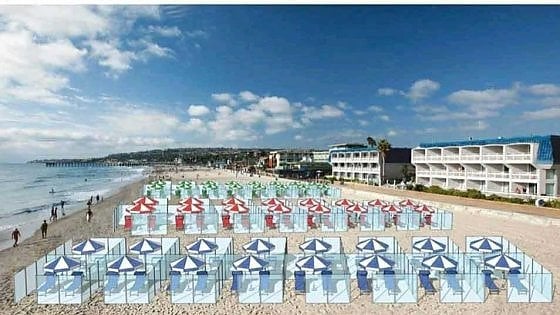Plexiglass, also known as acrylic glass, has emerged as an indispensable material across a wide range of industries due to its exceptional properties and versatility. This transparent and durable material offers countless applications in architecture, automotive, aviation, and more.
As an investor seeking new opportunities and insights into the world of investing, understanding the manufacturing process and market dynamics of plexiglass becomes vital.
In this article, we will explore the fascinating journey of plexiglass, from its historical background to its modern-day prominence. We will delve into the intricacies of its manufacturing process, unraveling the steps involved in transforming raw materials into this remarkable substance.
By examining its unique properties such as transparency and durability, we can better comprehend why plexiglass has become a favored choice in various industries.
To provide a comprehensive overview, we will also spotlight popular brands that have mastered the art of producing high-quality plexiglass products. Through their expertise and innovation, these brands have established themselves as trusted leaders within the industry.
Moreover, we will delve into the vast range of applications where plexiglass shines. From architectural marvels that incorporate transparent facades to sleek automotive designs that rely on lightweight yet sturdy components, plexiglass continues to shape our modern world.
As investment opportunities abound in today’s dynamic markets, we cannot overlook the growing demand for plexiglass investments. By analyzing market trends and exploring potential avenues for investors, we aim to provide valuable insights into this exciting sector.
So join us as we embark on this journey through the captivating realm of plexiglass – a material that not only offers transparency and durability but also opens doors to lucrative investment prospects.
Let’s dive deep into understanding the history, manufacturing process, properties, applications across industries, and investment considerations surrounding plexiglass.
History of Plexiglass
Plexiglass, or acrylic glass, has a fascinating history that dates back to the early 20th century. It was invented by Otto Röhm, who discovered an effective method to polymerize methyl methacrylate monomer (MMA). This led to the creation of a transparent and shatter-resistant material known as plexiglass.
Further advancements in manufacturing techniques enabled its commercial production, and industries quickly recognized its value and versatility. Today, plexiglass is widely used in various applications due to its lightweight nature, high impact resistance, and excellent clarity.
Its journey from invention to widespread usage showcases its enduring importance in modern society.
| Heading | Content |
|---|---|
| Introduction | Plexiglass is a transparent thermoplastic derived from methyl methacrylate monomer (MMA) through polymerization. It offers excellent clarity and light transmission properties. |
| Importance and Various Applications | Plexiglass is highly desirable across numerous industries for its lightweight nature and high impact resistance. It finds application in architectural projects such as skylights, windows, doors, and partitions due to its durability and weatherability. |
| The Origins of Plexiglass | Otto Röhm’s pioneering work led to the invention of plexiglass by effectively polymerizing MMA. Further experimentation and advancements in manufacturing processes resulted in its commercial production and exponential growth in popularity among industries. |
Manufacturing Process of Plexiglass
Plexiglass, also known as acrylic, is produced through a multi-step manufacturing process. It begins with the utilization of methyl methacrylate monomer (MMA) derived from petrochemical sources. MMA undergoes polymerization to form long chains of acrylic polymers that contribute to the final product’s properties.
Catalysts and additives like plasticizers and stabilizers are incorporated to control the polymerization reaction and enhance specific characteristics such as UV resistance or chemical stability.
Once the polymerization process is complete, plexiglass can be formed using two main techniques. Casting involves pouring liquid acrylic resin onto a flat surface to create sheets with exceptional clarity and uniform thickness.
Extrusion, on the other hand, utilizes molten plexiglass that is extruded through a die to form blocks of varying sizes and shapes.
In summary, the production of plexiglass involves the use of MMA as a raw material, followed by polymerization and the addition of catalysts and additives. The final product can be obtained through casting for sheets or extrusion for blocks.
Properties of Plexiglass
Plexiglass, a type of acrylic, has become a popular choice in various industries due to its exceptional properties. It offers impressive light transmission capabilities, allowing up to 92% of visible light to pass through, making it perfect for applications that require maximum clarity.
Unlike traditional glass, plexiglass is more impact-resistant and less prone to shattering or breaking upon impact, enhancing safety in automotive windshields and protective barriers.
Another advantage of plexiglass is its exceptional resistance to UV radiation, preventing yellowing or degradation when exposed to sunlight. This makes it highly suitable for outdoor applications that require long-term durability.
Additionally, plexiglass demonstrates remarkable resistance to chemicals such as acids and solvents, making it ideal for environments where exposure to corrosive substances is common.
In terms of thermal properties, plexiglass exhibits excellent temperature stability without significant deformation or structural changes. Its low thermal conductivity also makes it useful for insulation purposes in industries like construction and electronics.
Overall, the properties of plexiglass make it a versatile material with advantages over traditional glass. Its transparency, impact resistance, weatherability, chemical resistance, and thermal stability contribute to its wide range of applications across industries.
[lyte id=’RIfcd8KL4kk’]


